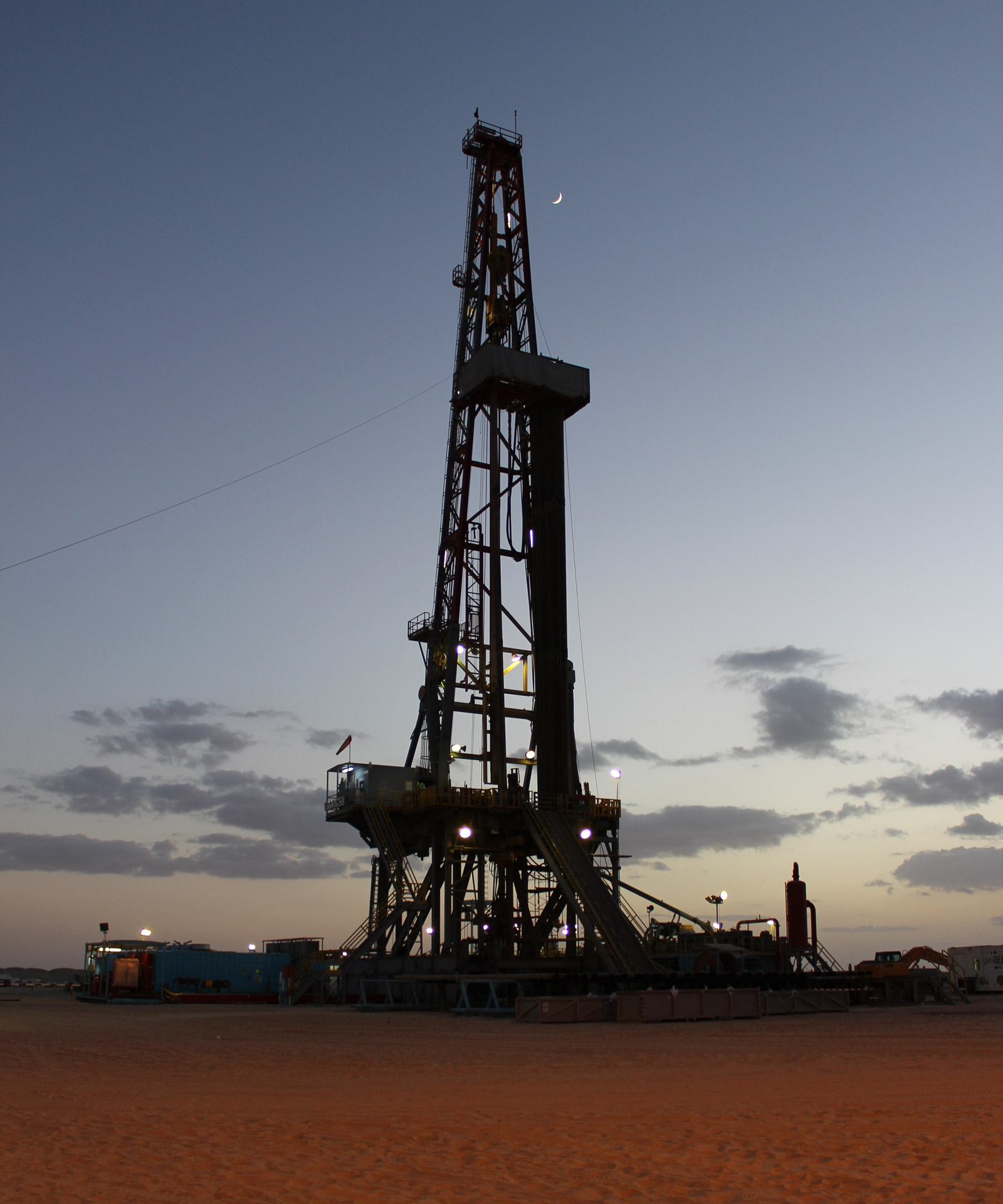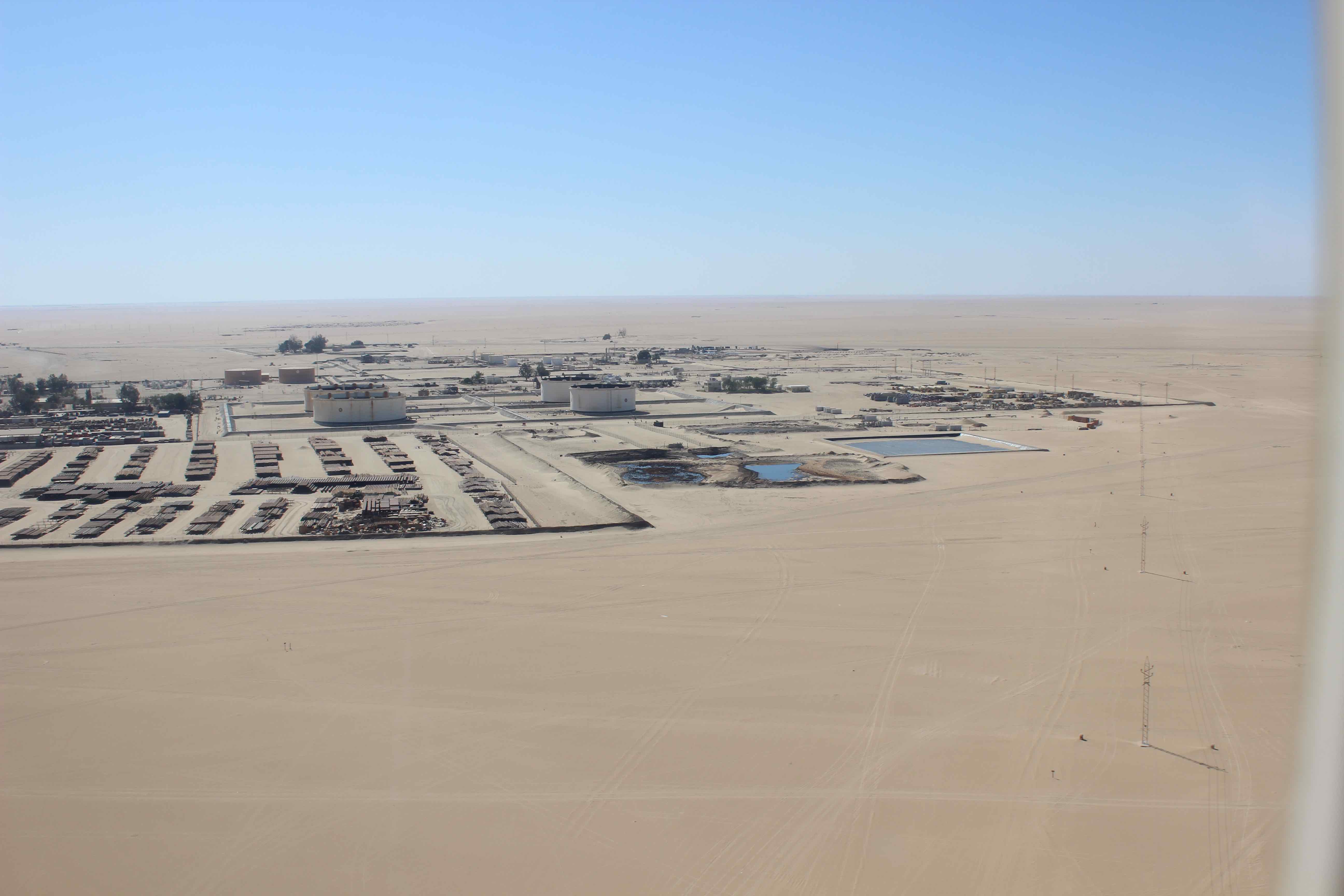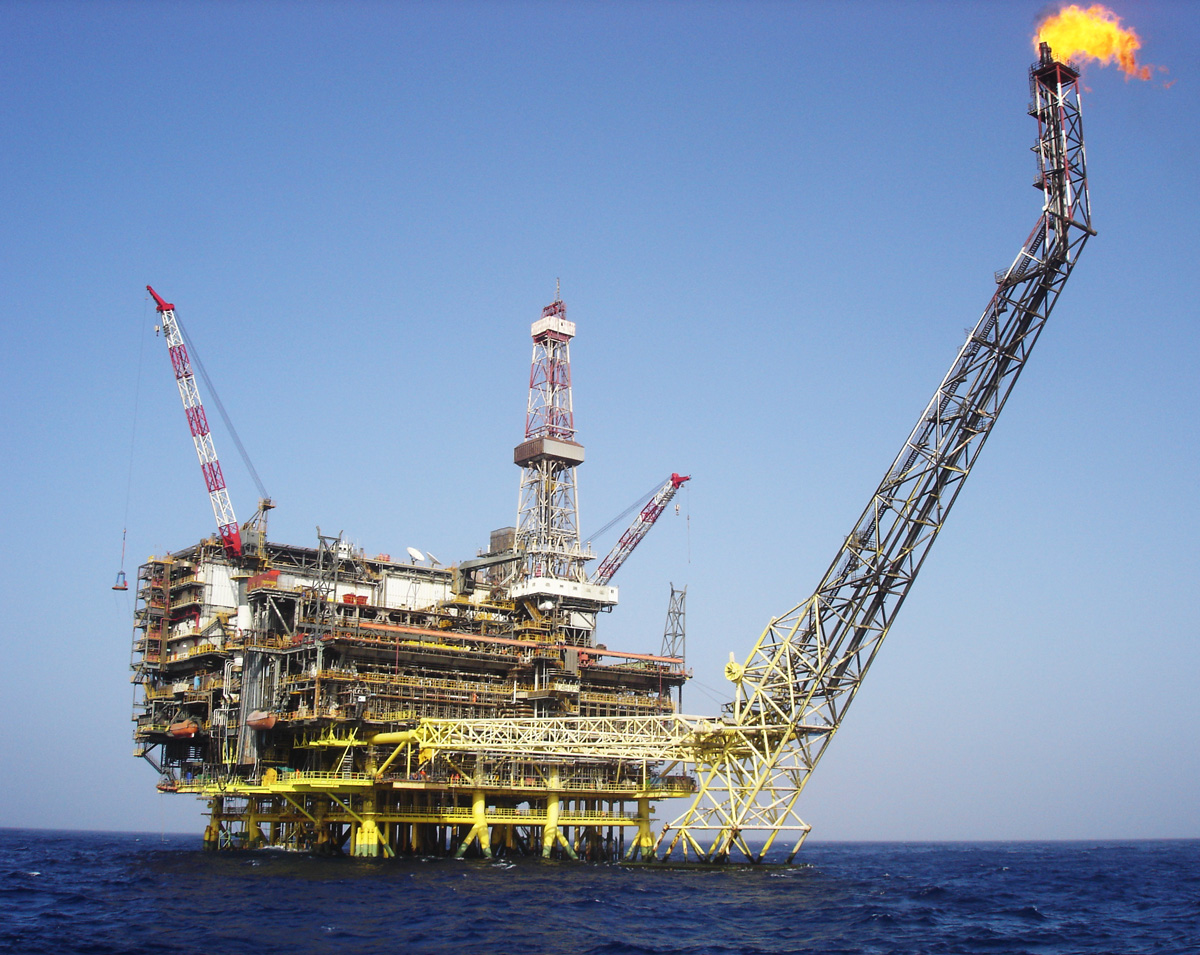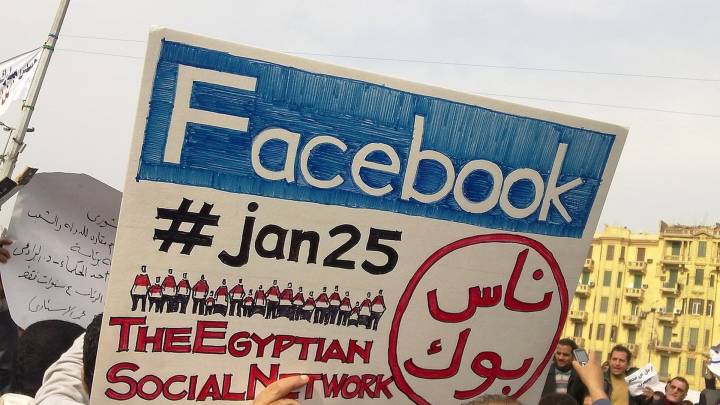Libya’s economy relies on oil, and the nature of the country’s current conflict is intrinsically tied to its economic model.
As I walked out of the airplane and down the steps into the glare of a hot day in Benghazi, I was surprised to see a battered Toyota pickup containing three militiamen speeding across the runway. The Toyota pulled up next to the steps, and the driver got out. He shook my hand and told me he was there to take me to meet Ibrahim Jadhran.
It was 2013, and Jadhran – commander of the Petroleum Facilities Guard, a parastatal military force – had just seized control of three of Libya’s biggest oil export terminals. I spent the following three days at Jadhran’s headquarters in the small oil town of Ajdabiya, witnessing first-hand the tribal deal-making and fragmented partnerships between armed groups that make sustained oil production possible in Libya’s east.
The real goal for all the parties vying for power in Libya right now is controlling the central bank and being in the right position when those monies are unlocked.
Prior to seizing control of the ports and stopping exports, the PFG commander had been a major asset to the Tripoli-based central government in the west of the country. A former rebel leader during the 2011 uprising, he was put in charge of an armed force to defend the country’s key export ports and eastern oil infrastructure. The security and stability he brought helped Libya shock the world in the wake of the revolution, rapidly ramping up production from a low of 7,000 barrels a day (b/d) in August 2011 to 1.4 million b/d in May 2012. This was close to pre-revolution highs, despite the conflict still raging in small pockets of the country.
After surprising the world with its quick and efficient return to high-volume oil production, Libya sent markets reeling once again in June 2013 when Jadhran seized control of the facilities, turned against the government in Tripoli and started campaigning for more autonomy for Libya’s eastern region, known as Cyrenaica. By shutting down the eastern ports, Jadhran helped reduce Libya’s oil production from a high of 1.5 million b/d to a low of just 213,000 b/d in May 2014.
My visit came soon after Jadhran took control of Libya’s eastern terminals of Sidra, Ras Lanuf and Zueitina. After I got into the car, we skipped the airport terminal and drove straight from the runway, out through a gate and onto the street. The only direct way to Jadhran’s headquarters in Ajdabiya was a desert highway studded with a series of militia checkpoints. Some of these were directly controlled by Jadhran’s men; others were controlled by groups that had agreements with him.
One checkpoint was controlled by Ansar Al-Sharia, an Islamist group that had publicly announced its support for al-Qaeda and flew the flag now associated with, and used by, the so-called Islamic State. A militiaman in the vehicle explained to me that Jadhran’s militias and Ansar Al-Sharia were not aligned ideologically, but by and large the two groups left each other alone to pursue their separate objectives without interference.
I stayed two nights at the small hotel in Ajdabiya which was Jadhran’s headquarters, and spoke to him for an hour on two consecutive days. But the more vivid impression came between interviews, as I watched tribal leaders arrive in convoys of shiny white brand-new Toyotas with dozens of armed men, all coming for meetings with Jadhran.
The experience painted a striking picture of Libyan politics in action: a surfeit of oil, arms and ideas, balanced over numerous precarious alliances. It appeared to be a dynamic framework, a house of cards where power rapidly shifted between groups and key players.
Though much has changed since 2013, this fragmented political power structure remains one of the biggest obstacles to stability for the country. In September, the UN launched a new plan to try to unify the country’s rival political factions. The new roadmap and the new round of talks in Tunis were presented as a chance for Libya to drag itself back from the brink of absolute chaos. However, due to the fragmented security situation, many remain unconvinced it will be successful in reinvigorating an inclusive political process in the country.
“The outlook for a comprehensive deal in Libya is still not good,” says Anthony Skinner, director for the Middle East and North Africa at Verisk Maplecroft, a research company. “Expecting Prime Minister Fayez al-Sarraj to rein in the large number of armed groups in western Libya is unrealistic.”
As talks between the leaders of Libya’s various political leaders ground on in Tunis, battles in the streets of the Libyan smuggling hub of Sebratha were dominating headlines. At the end of September, Libya’s Health Ministry announced that two weeks of clashes had left 26 people dead and 170 wounded.
The clashes in Sebratha are part of a seemingly unstoppable cycle of violence where militias kill with impunity while running highly profitable illegal businesses that include people smuggling, drug dealing, kidnapping, extortion and gun running.
Oil at the heart of chaos
At the heart of all the chaos are the country’s oil reserves, the biggest in Africa. Libya has 48.4 billion barrels of oil still in the ground, according to the BP Statistical Review of World Energy – 11 billion barrels more than second-place Nigeria.
Massive oil reserves helped make Libya one of Africa’s wealthiest countries prior to the uprising, but also one of the least economically diversified. Today the country depends on oil for more than 95 per cent of export revenues.
The nature of the country’s current conflict is intrinsically tied to its economic model, according to Mustafa Sanalla, Chairman of Libya’s National Oil Corporation.
In a New York Times op-ed published in June he said: “absolute dependence on oil and gas… has helped turn political infighting into a winner-take-all contest”.
While many of the country’s smaller militias are focused on profiting from criminal operations, gaining control of the country’s oil revenues is the prize that the country’s biggest political players have firmly in their sights.
“The real goal for all the parties vying for power in Libya right now is controlling the central bank and being in the right position when those monies are unlocked,” says Richard Mallinson, an analyst at Energy Aspects. “At the moment, the major players seem to be primarily using peaceful methods to try and achieve this objective – but if this doesn’t work, they may well use military tactics.”
An unpredictable player
With the country’s economy dependent on oil and gas revenues, maintaining production is key to keeping the country solvent and continuing payments to public sector workers. But the country’s oil sector is vulnerable to disruption from armed groups, and militias have repeatedly hijacked key elements of the oil infrastructure to use as bargaining tools.
It remains to be seen whether [Haftar] will continue to get enough compromises from Tripoli to keep him happy and keep him from cutting exports from the terminals. Oil production from Libya’s main onshore fields has been very unpredictable since 2011. Between August 2016 and July 2017, history repeated itself and Libya took the world by surprise, unexpectedly tripling its oil production and causing dramatic swings in global crude prices, helping to push global oil prices to a 12-month low in June 2017. The massive increase in Libyan production, which peaked at a four-year high, was especially difficult for OPEC, as it undermined efforts to prop up crude prices. In an effort to reduce the global oil glut, the oil cartel had painstakingly orchestrated a deal involving production caps for 21 nations that was finalised in November 2016.
When the deal to reduce output was brokered, Libya was not expected to be capable of a significant production increase due to the ongoing civil war, and was not included in the production cut agreement – and after the deal was agreed, Libya nearly doubled production, from 577,000 barrels a day (b/d) in November 2016 to 1,001,000 b/d in July 2017.
This main driver of the surge in production was Field Marshal Khalifa Haftar, head of the Libyan National Army and loyal to the Tobruk-based House of Representatives, which opposes the self-proclaimed government in Tripoli, the General National Congress. After a period of fighting and tribal negotiations, he took full control of the eastern oil terminal from Jadhran in March 2017. Under Haftar’s control, the terminals have been allowed to operate freely, permitting production to hit 1 million b/d in June, a level not reached since July 2013.
Control of the ports has given the field marshal extra leverage in the ongoing political talks.
“One of the big unknowns right now is Haftar's game plan,” says Mallinson. “It’s clear he expects to have a senior position in any unified state, something like being made head of armed forces or even becoming president of a future united government.”
Ever since he rose to prominence as a military leader in eastern Libya in February 2014, Haftar has oscillated between threatening Tripoli and trying to get what he wants at the negotiation table.
“It seems as if he is trying to present the image of a statesman, someone who is reasonable and can be bargained with,” says Mallinson. “It remains to be seen whether he will continue to get enough compromises from Tripoli to keep him happy and keep him from cutting exports from the terminals.”
Though the eastern oil terminals are a key bargaining chip in the power struggle to control Libya’s oil supplies – numerous pieces of infrastructure can be used to disrupt oil exports – it remains to be seen just how tight Haftar’s grip on Libya’s oil sector really is.
“It’s unclear where Haftar is getting his financial support from. He is certainly receiving some sort of support from external actors like the UAE and Russia, and it seems like these external actors are guiding him and influencing him to be patient,” says Mallinson.
In March, Haftar was generally thought to be in control of all the country’s most important oil infrastructure, including the largest oil field, Sharara. This changed on 20 August when Sharara was closed by a blockade, reducing Libya’s production by about 360,000 b/d. Since then, Sharara has repeatedly been closed and reopened.
Ongoing
Since the launch of the 20 September roadmap, many outside entities with a stake in Libya’s success have weighed in. France, the UK and Italy have all backed the plan and urged Libya’s political leaders and institutions to get behind it. Speaking after the launch of the roadmap, British Prime Minister Theresa May said: “We must be united behind the roadmap. Our collective credibility is at stake in Libya.”
Oil and gas infrastructure is such a soft target. Despite the hopes of these world leaders, the outlook for Libya remains bleak and the oil industry is likely to remain a bargaining chip. Even if talks exceed expectations, political leaders are unlikely to be able to stop rogue militias from hijacking key oil pipelines and ports, affecting production and ultimately hurting the Libyan economy and ordinary citizens.
“No one has enough control to ensure that the country’s oil infrastructure will be protected. The central government is so dependent on oil that even for small rural militias it’s an easy way of getting attention,” says Emma Richards, a senior oil and gas analyst at BMI Research.
“Oil and gas infrastructure is such a soft target. It would be hard to prevent attacks on infrastructure even if Libya’s government was functioning well. As things stand, even if the political talks go according to plan, authorities have no hope when it comes to stopping armed groups from disrupting oil production and exports.”
Keeping all the various armed groups satisfied is an almost impossible task. Each one has the ability to hold the authorities to ransom by attacking the oil infrastructure that the country’s economy depends on.
If Libya fails to secure a stable income for any future unified central government, this will create a vicious circle and undermine efforts to improve the security situation, which will in turn make it harder for the government to secure a stable income.








